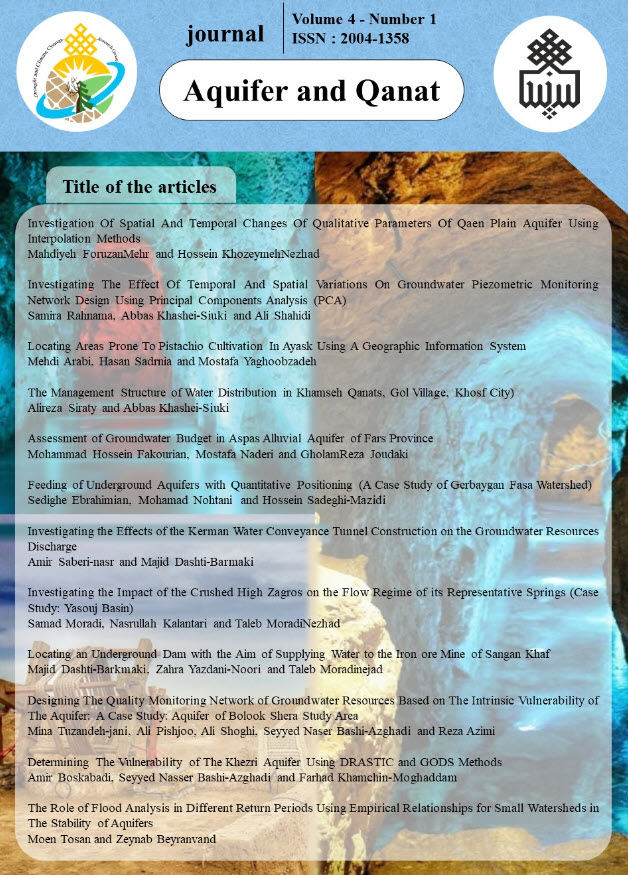Document Type : Original Article
Authors
1 Graduated from Abu Reihan Campus, University of Tehran
2 Ph.D. Department of water engineering, University of Tehran. Department of Water resources research, Water research institute, Ministry of energy, Tehran, Iran.
3 Assistant Prof., Department of water engineering, College of Aburaihan, University of Tehran
Abstract
The water crisis is one of the most important conflicts of the day, and Iran is also in the field of water resources from countries with tension. Following the drop in groundwater levels in aquifers, most of the country's plains have experienced water crisis and water scarcity and their groundwater aquifers have been limited. Among the water stresses, Hashtgerd Plain, which has been selected as the study area. In order to exit the plain from the aforementioned situation, water management should be undertaken with basic management measures, which requires the provision of water resources predictive tools through these measures, one of which is the Bayesian network; In this study, to create a water-borne water prediction model, the predicted variable, groundwater surface parameter in the following month and predictive variables, temperature, precipitation, evaporation, aquifer feeding, The discharge level of the aquifer and the groundwater level were considered in the current month. To reduce information uncertainty, two predictive approaches were used with categorized data (discrete data) and prediction with explicit data (continuous data), and by examining the precision of the pre- The aquifer nose by the two approaches referred to provides explicit precision approach to observational hydrographs. As a result, this approach has been selected as a superior approach for predicting groundwater level due to the application of management scenarios in which the values of the coefficient of explanation 0.94 and the RMSE is 0.207. The approach used in this study can be used in other water resources stresses.
Keywords
- Castelletti, A., Soncini-Sessa, R. 2007. Bayesian networks and participatory modelling in water resource management. Environmental Modelling & Software; 22: 1291-1233.
- Freni, G., and Mannina, G. 2010. Bayesian approach for uncertainty quantification in water quality modelling: The influence of prior distribution. Journal of hydrology; 392(1): 31-39.
- Macqueen, J. 1967. Some methods for classification and analysis of multivariate observations. In Proceedings of the 5th Berkeley symposium on mathematical statistics and probability. University of California, Berkeley, CA. 281-297.
- Mekonnen, M.M., and Hoekstra, A. Y. 2016. Four billion people facing severe water scarcity. Science Advances; 2(2): e1500323.
- Neapolitan, R. E. 2004. Learning Bayesian Networks. Prentice Hall, New Jersey, US.
- Ramin, , Labencki, T., Boyd, D., Trolle, D., and Arhonditsis, G. B. 2012. Abayesian synthesis of predictions from different models for setting water quality criteria. Ecological Modelling; 242(14): 127-145.
- Sahoo, S., Madan, K.J. 2013. Groundwater-level prediction using multiple linear regression and artificial neural network techniques: a comparative assessment. Hydrogeology Journal; 21: 1865–1887.
- Varis, O. 1997. Bayesian decision analysis for environmental and resource

